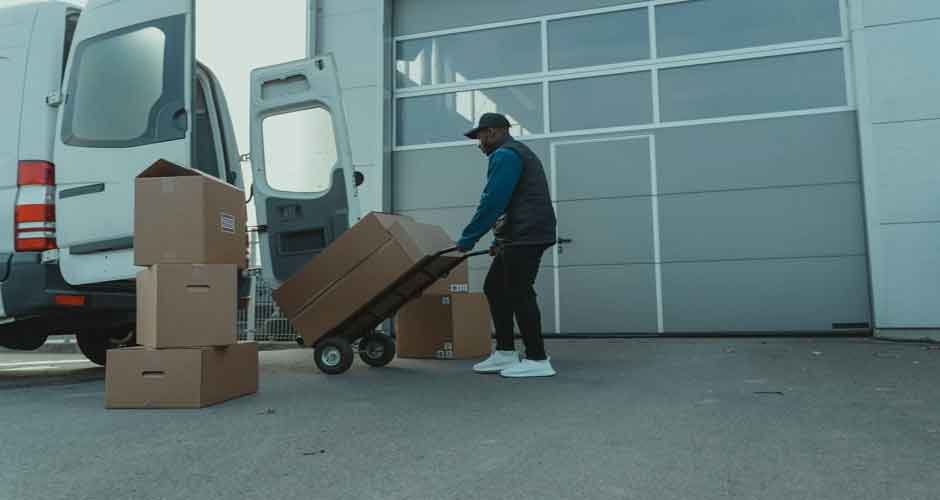One of the most critical aspects of a successful move is efficiently packing your moving truck.
Proper packing ensures that your possessions arrive safely and can save you time, money, and stress. Whether you’re moving across town or across the country, knowing how to pack a moving truck like a professional can make the process smoother and more manageable.
In this guide, we’ll provide you with expert strategies and practical tips to help you tackle this task with confidence and ease.
Choose the Right Size Truck
Before you begin packing, it’s important to choose the appropriate truck size for your move. A truck that’s too small may require multiple trips or force you to leave behind important items, while a truck that’s too large can lead to wasted space and higher fuel costs.
To determine the right size truck, evaluate the number of rooms you’re moving, the size and quantity of your furniture, and any other large items.
Most truck rental companies offer size guides on their websites, which can be a useful reference. Generally, a 10 to 12-foot truck is suitable for a small apartment, while a 26-foot truck can accommodate a 4+ bedroom house.
Take Inventory
Creating a detailed inventory of your belongings is essential for a smooth move. Start by listing all items room by room, noting their size, weight, and any special considerations such as fragility or value. This helps you stay organized and ensures nothing is left behind.
A thorough inventory also aids in determining the right truck size and identifying items that may require special packing materials. For example, delicate items like glassware or electronics might need extra padding or specific boxes.
Additionally, an inventory can be useful if you need to make an insurance claim for damaged or lost items during the move.
Label Boxes
Proper labeling of boxes can significantly streamline your moving process. Use a permanent marker to label each box with its contents and the room where it belongs. This helps you during the unloading process and makes it easier to find specific items when unpacking.
Consider using color-coded labels for quick identification of fragile items or priority boxes. For instance, red labels can denote fragile items, while blue labels indicate essentials that need to be unpacked first.
Clear labeling minimizes confusion and ensures that movers or helpers know exactly where to place each box in your new home.
Create a Clear Pathway
Remove any obstacles or tripping hazards from the route from your home to the moving truck. This includes moving furniture, rolling up rugs, and clearing any debris.
If you’re loading during the evening or early morning, ensure the pathway is well-lit to prevent accidents.
Having a clear path allows for smoother and faster transportation of items, reducing the risk of damage or injury. It also helps if you designate specific areas for staging boxes and furniture, so everyone knows where to go without causing congestion.
Distribute Weight Evenly
Distributing weight evenly in the truck is essential for safe driving and preventing items from shifting.
Pack in layers, securing each layer before adding the next. This method helps in maintaining the truck’s balance and makes it easier to unload without causing an avalanche of boxes. Aim to create a balanced load by placing heavier items at the bottom and lighter ones on top.
Place large appliances and bulky furniture like sofas, dressers, and bed frames at the front of the truck, near the cab. Position these items along the sides to distribute weight evenly and prevent them from shifting during transit. By securing heavy items first, you create a stable base for the rest of your load.
Once the large items are in place, you can begin loading lighter items, ensuring they are well-supported and less likely to move around. An evenly distributed load also ensures better handling of the truck, reducing the risk of accidents.
Secure Furniture
Wrap each piece in furniture pads or blankets, securing them with packing tape or straps to avoid scratches and dents. This protective covering acts as a cushion, absorbing shocks and vibrations during transit.
For added security, use tie-down straps to anchor furniture to the truck’s walls. This prevents items from shifting and bumping into each other.
Remember to handle delicate items like glass-top tables or antique pieces with extra care, ensuring they are well-padded and securely fastened to avoid any mishaps.
Fill Gaps
Filling gaps between items in the truck is crucial to prevent movement and damage during transit.
Use smaller boxes, soft items like bags of clothing, or packing materials to fill empty spaces. This strategy helps in two ways: it maximizes the use of available space and keeps items from shifting around. Securely packed items are less likely to jostle and break during the journey.
Additionally, filling gaps with soft items provides extra cushioning for delicate belongings. Always ensure that there are no loose items that could move around and cause damage to other packed items.
Hire Professional Movers
If packing and loading a truck feels overwhelming, consider hiring professional movers. They have the expertise and equipment to handle your belongings safely and efficiently.
Eric Taylor, owner of Fort Mill Friendly Movers, says, “Professional movers are trained to handle all types of items, from delicate antiques to heavy furniture, ensuring that everything is packed securely and transported safely.”
Professional movers can save you time and reduce the physical strain associated with moving. They are trained in packing techniques and can maximize the space in your truck, ensuring all items are secure and protected. Additionally, movers often provide insurance for your belongings, adding an extra layer of security.
Conclusion
Successfully packing a moving truck requires careful planning and execution. With the tips provided, you can navigate this process with ease.
Choosing the right truck size, maintaining a detailed inventory, and labeling boxes accurately are essential steps. Creating a clear pathway, loading heavy items first, and filling gaps help protect your belongings. Also, distributing weight evenly and considering professional movers ensures safe transportation.
Now that you know how to pack a moving truck like a pro, you can make your moving day less stressful and more organized.












